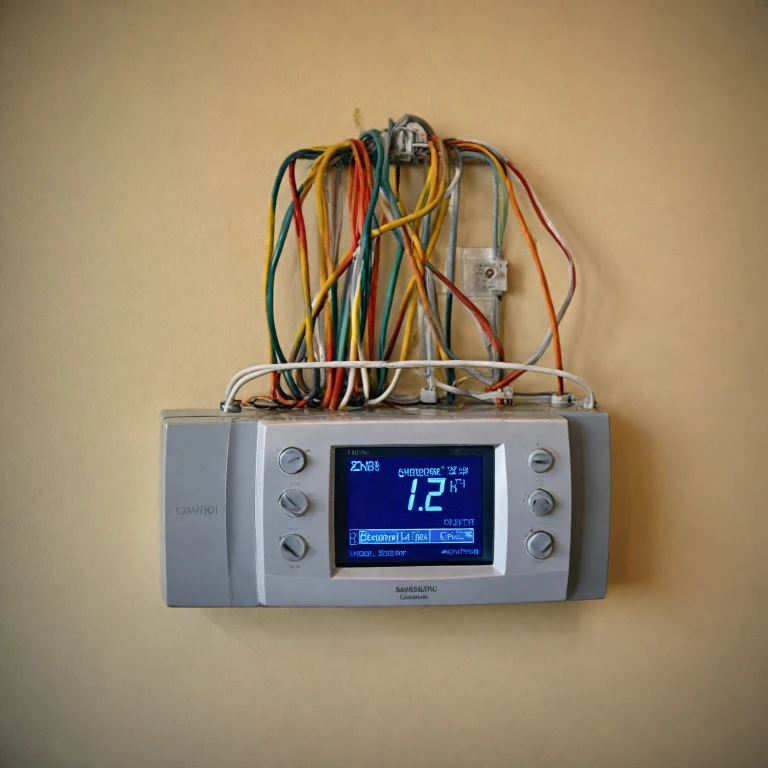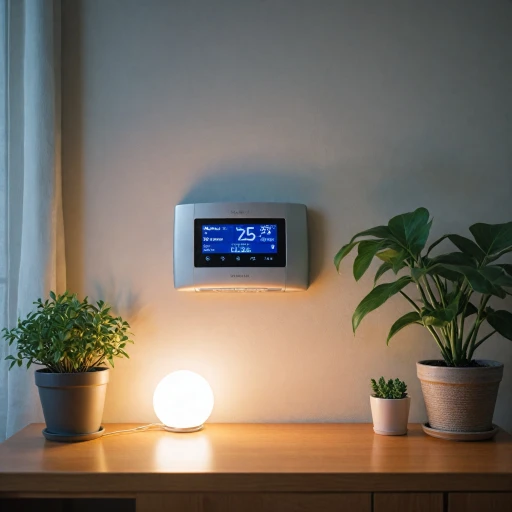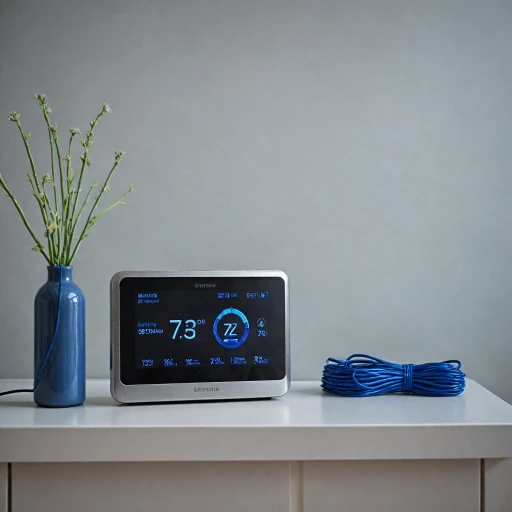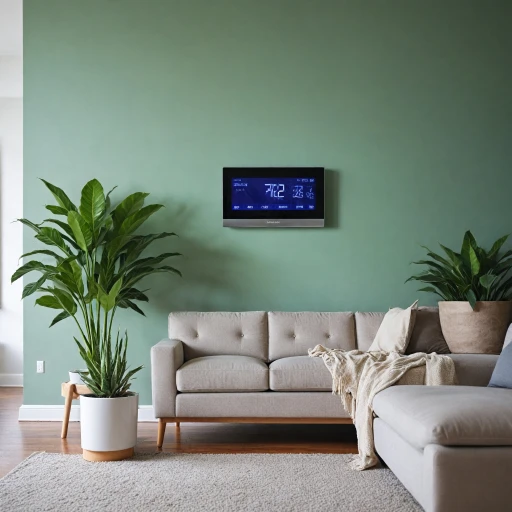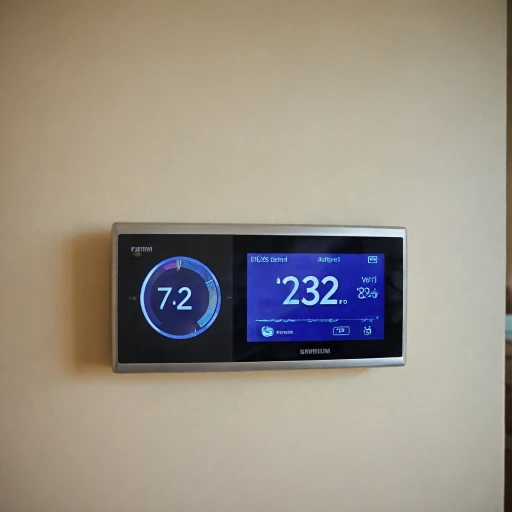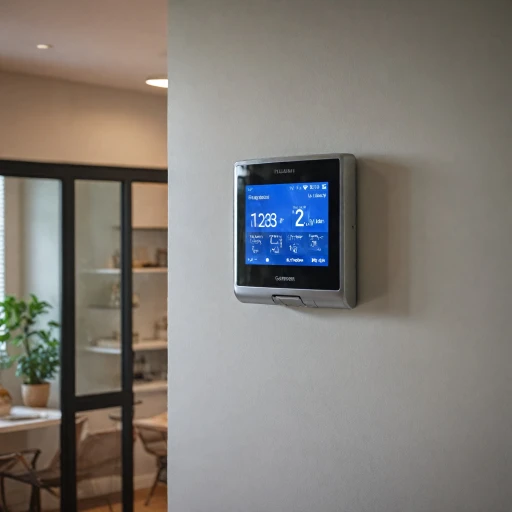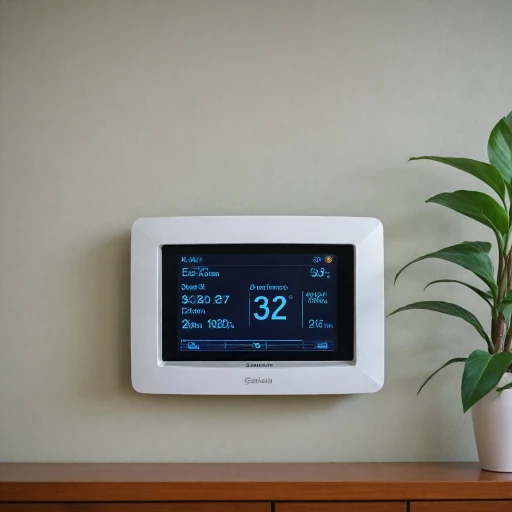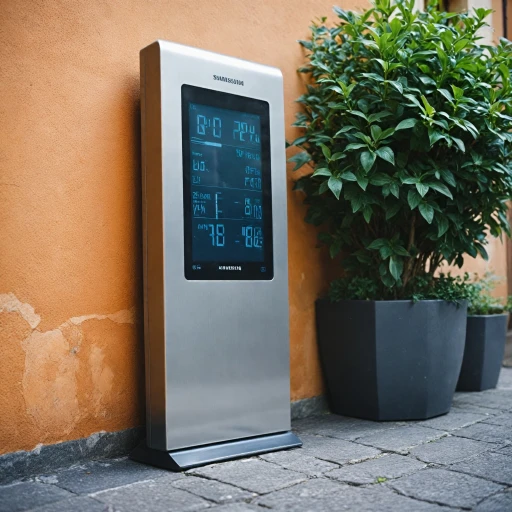
The Basics of Wired Thermostats
Fundamentals of Thermostat Wiring
Wired thermostats are integral components of heating, ventilation, and air conditioning (HVAC) systems, designed to maintain a consistent indoor temperature. These traditional products rely on a network of wires to connect the thermostat to the heating and cooling systems, allowing you to control the environment settings in your home.
The basic wired thermostat includes several essential components that work together to provide a comprehensive temperature management solution:
- Thermostat Wiring: This involves connecting the appropriate wires to the correct wire terminal within the thermostat and the HVAC system. Understanding the wiring diagram for your furnace thermostat is crucial for successful installation. Learn more about decoding wiring diagrams.
- Control Board: The heart of the system where electronic signals are processed to regulate temperature settings based on user preferences set through the wired thermostat or a connected app.
- Thermostat Wire: These wires, such as the common red wire, are responsible for establishing communication between the thermostat and the HVAC system, thus enabling the proper functioning of heating and cooling features.
While wired thermostats have been around for decades, recent innovations in smart thermostat technology have introduced wired programmable options that interact with applications on smartphones, like the tado smart app for Android, to provide enhanced control and energy efficiency. However, it is crucial to compare the characteristics of wired and wireless thermostats to make a well-informed decision on their suitability for a specific heating system.
Modern wired thermostats like the Tado models offer capabilities that include managing temperature and energy consumption via advanced algorithms and remote connection with your heating system, making them comparable in intelligence to their wireless counterparts while maintaining a secure wired connection.
Benefits of Choosing a Wired Thermostat
Advantages of Opting for a Wired Thermostat
When it comes to managing your home's heating and cooling systems, a wired thermostat offers several compelling benefits. These devices are known for their reliability and efficiency, making them a popular choice for many homeowners.
- Stable Connection: Unlike wireless options, wired thermostats maintain a stable connection to your HVAC system. This ensures that your heating and cooling systems respond promptly to temperature adjustments.
- Energy Efficiency: Wired thermostats, especially smart models like the tado smart thermostat, can help optimize energy usage. By maintaining precise control over your heating system, these thermostats can reduce energy consumption and lower utility bills.
- Compatibility: Many wired thermostats are designed to work seamlessly with a variety of heating systems, including heat pumps and suitable boilers. This makes them a versatile choice for different HVAC setups.
- Durability: The physical connection provided by thermostat wiring often results in a more durable product, less prone to connectivity issues that can affect wireless models.
- Advanced Control: Modern wired programmable thermostats offer advanced control options through apps, allowing you to adjust settings remotely via your smartphone. This feature is particularly useful for managing temperature while you're away from home.
For those interested in exploring the full potential of wired thermostats, understanding the T705 thermostat manual for smart home efficiency can provide valuable insights.
While wired thermostats offer numerous benefits, it's essential to compare them with wireless options to determine the best fit for your needs. Consider factors such as installation complexity, control preferences, and the specific requirements of your heating system when making your decision.
Installation Process for Wired Thermostats
Getting Started with Setting Up Your Wired Thermostat
Installing a wired thermostat can seem daunting at first, but with the right tools and information, it becomes a straightforward task. Before you begin, ensure you have all the necessary components and understand the eco-friendly benefits of your smart thermostat. Here's a step-by-step guide to help you get started:
- Gather Your Tools and Materials: You'll need a screwdriver, wire cutters, a level, and the thermostat along with the installation manual.
- Turn Off Power: Safety first. Switch off the power to your heating system at the main circuit breaker to prevent any electrical mishaps.
- Remove the Old Thermostat: Take off the cover of the existing thermostat and disconnect the wires. Be sure to label each wire to match your new thermostat's wire terminals.
- Wire the New Thermostat: Follow the wiring diagram provided in your new thermostat’s manual carefully. Some products, like the tado smart thermostat, come with additional wire adapters for systems like heat pumps and mini splits.
- Secure the Thermostat: Use a level to ensure your thermostat is evenly placed before securing it with screws.
- Power On and Configure: Once everything is in place, restore power and configure your thermostat settings through its app, such as on Android platforms.
Keep in mind that thermostat wiring varies depending on the heating system and type of product you've chosen. Consult the manual for specifics related to HVAC systems or suitable boilers, as improper installation can lead to energy inefficiency.
Taking time to understand the nuances of your new device will ensure seamless integration within your household. If challenges persist, it's advisable to seek professional assistance to guarantee optimal functionality and integration.
Comparing Wired and Wireless Thermostats
Discern ing Differences Between Wired and Wireless Thermostats
When considering if a wired or wireless thermostat is right for your HVAC system, the choice impacts elements such as the ease of installation, energy efficiency, and customization options. Though both aim to provide comfort, their differences are quite distinct. Wired thermostats, which utilize thermostat wiring and wire terminals, often promise robust reliability thanks to their physical connections to the system. They present an attractive choice for homeowners seeking consistent temperature control without relying on wireless signals. Wired programmable models often come with straightforward manual control options, offering reliability in various heating systems, including suitable boilers and HVAC systems. On the other side, smart thermostats that operate wirelessly extend options for more modern conveniences. These typically include compatibility with smart home devices, such as Alexa, and the ability to control temperatures remotely using a smartphone app—options that can significantly enhance your home’s energy efficiency. These features, along with advanced functionalities such as scheduling and energy usage monitoring, enable users to maintain optimal heating or cooling efficiency. However, a trade-off to consider is the potential for connectivity issues in wireless models, which rely on your internet's reliability to function effectively. This might not be a problem if the internet service is consistently reliable in your area, but could be a concern in locations with poorer internet coverage. In summary, as you weigh the options between these two types of thermostats, consider your specific needs. Whether you prioritize installation ease, energy savings, or smart home compatibility, understanding these differences equips you to make an informed decision.Common Issues and Troubleshooting Tips
Overcoming Typical Challenges in Wired Thermostats
Wired thermostats, while reliable, can present some common issues that users may encounter over time. Understanding these potential problems and their solutions can ensure your thermostat remains efficient.Dealing with Wiring Issues
One frequent problem is associated with the thermostat wires themselves. Misconnections or loose wires can lead to temperature discrepancies, and may even disrupt your heating system. For instance, the red wire, often connected to the control board, plays a critical role in powering the thermostat. Ensuring that each wire terminal is securely connected and that the wiring matches the configuration specifics of your HVAC system is crucial.Troubleshooting Inconsistent Temperature Control
If you notice that your room's temperature doesn't match the set temperature on your smart thermostat, consider recalibrating the thermostat or checking the sensor placement. Sometimes, heat sources like direct sunlight can influence readings. Additionally, wired programmable thermostat options that offer smart app integration give users enhanced control over heating cooling systems to mitigate such issues.Interference in Heating System Compatibility
Not every wired thermostat is compatible with all heating systems, particularly when dealing with heat pumps or certain models of mini splits. Always ensure your product is suitable for your specific heating system to avoid energy inefficiencies. If you are facing issues, verifying compatibility with your local store or consulting your system’s manual could be beneficial.Neglecting Regular Maintenance
Routine maintenance is another key to avoiding common problems. Dust and debris can accumulate over time, potentially affecting performance. Regularly checking and cleaning the wire terminals and the thermostat wiring can prevent malfunctions.Enhancing Functionality with Smart Options
While dealing with any issues, remember that tech advancements continuously evolve. Smart thermostats like the tado smart thermostat offer advanced features through their app, allowing for remote control and energy saving options. Investing in such products may lower the chances of typical wired thermostat issues. Understanding these typical challenges and their straightforward solutions can significantly increase the longevity and performance of your wired thermostat system.Future Trends in Smart Thermostat Technology
Exploring Innovations in Smart Thermostat Technology
The landscape of smart thermostat technology is rapidly evolving, with manufacturers continuously seeking innovative ways to optimize home heating and cooling systems. With the rise of connected devices, smart thermostats are becoming increasingly sophisticated, offering features that extend beyond traditional wired thermostats.One major trend is the integration of machine learning algorithms. These algorithms enable smart thermostats to learn from user behavior, understanding preferences and patterns to automatically adjust temperature settings. This not only enhances user comfort but also improves energy efficiency without constant user input.
Another advancement is the enhanced compatibility with other smart home systems. Many smart thermostats now offer seamless integration with voice-activated assistants and smart hubs, allowing users to control their HVAC systems via simple voice commands or centralized apps. This aspect significantly simplifies the user experience by connecting the thermostat with a broader array of smart devices.
The availability of remote control capabilities through apps has also revolutionized thermostat management. Modern systems, such as the tado smart thermostats, allow users to make real-time adjustments to their home’s temperature from virtually anywhere using their smartphones. This convenience not only enhances comfort but also ensures energy is used efficiently, even when away from home.
Furthermore, advancements continue to be made in energy monitoring and reporting. Smart thermostats can now provide detailed insights into energy consumption patterns, helping homeowners identify opportunities to save on heating and cooling costs. These reports can be accessed via versatile apps, offering detailed data right at the user’s fingertips.
Technology is also making strides in enhancing compatibility with a wider range of heating and cooling systems. Whether you are operating a heat pump, a suitable boiler, or a mini split system, the variety of options available in smart thermostats are growing, giving homeowners more inclusive control over their environments.
As smart thermostats continue to develop, it is important for consumers to stay informed about the latest products and technology trends, ensuring they select the system that best meets their specific heating and cooling needs.
